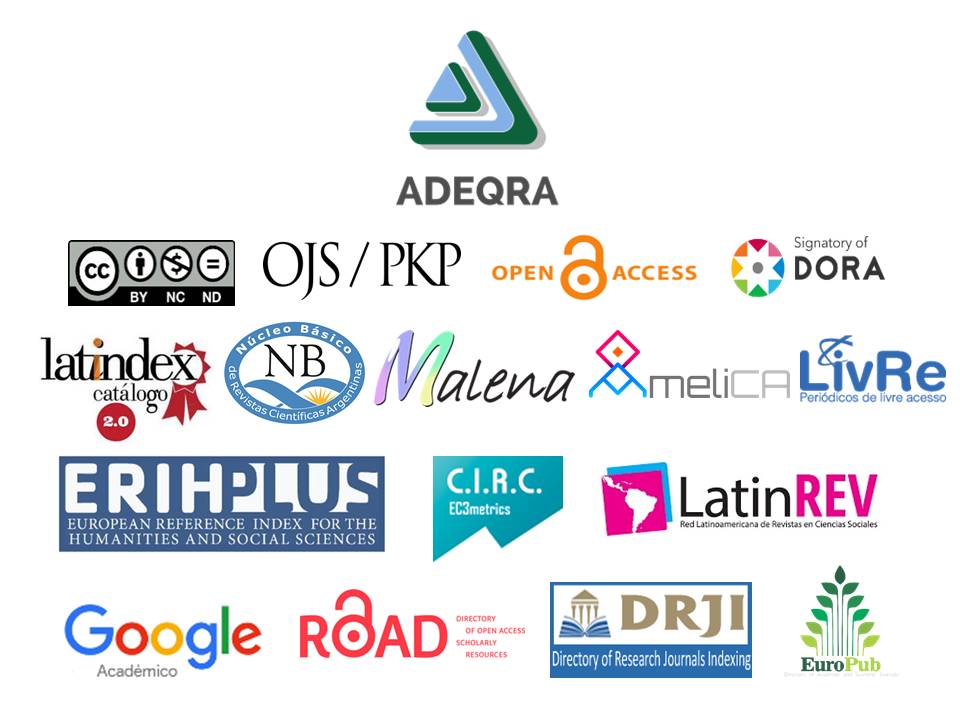QSAR-3D as an abstraction tool in the education of medical chemistry
Keywords:
Medicinal Chemistry, QSAR-3D, GraphicsAbstract
This work seeks to analyze the benefits and difficulties of implementing QSAR-3D in the teaching of medicinal chemistry. The theoretical context of both the QSAR-3D method and the pedagogical bases that underlie this educational intervention will be discussed. The most important axes are the current limitations in the students' capacity for abstraction and the new technologies that make it possible to propose a novel approach in an area of great relevance in medicinal chemistry. In particular, the feasibility of conducting a computational experiment remotely is evaluated. Connections with other chemistry sub-disciplines are also revealed to highlight their value as cross-sectional content
References
Ballante, F. y Ragno, R. (2012). 3-D QSAutogrid/R: An alternative procedure to build 3-D QSAR models. Methodologies and applications. Journal of chemical information and modeling, 52(6), 1674–1685. https://doi.org/10.1021/ci300123x
Cramer, R. D., Patterson, D. E. y Bunce, J. D. (1988). Comparative molecular field analysis (CoMFA). 1. Effect of shape on binding of steroids to carrier proteins. Journal of the American Chemical Society, 110(18), 5959–5967. https://doi.org/10.1021/ja00226a005
Hansch, C., Fujita, T. (1964). p-σ-π Analysis. A Method for the Correlation of Biological Activity and Chemical Structure. Journal of the American Chemical Society, 86(8), 1616–1626. https://doi.org/10.1021/ja01062a035
Johnstone, A. H. (1993). The development of chemistry teaching: a changing response to a changing demand. Journal of Chemical Education, 70(9), 701-705. https://doi.org/10.1021/ed070p701
Kubinyi, H. (1997). QSAR and 3D QSAR in drug design Part 1: methodology. Drug Discovery Today, 2(11), 457-467. https://doi.org/10.1016/S1359-6446(97)01079-9
Lorenzo, M. G. y Pozo, J. I. (2010). La representación gráfica de la estructura espacial de las moléculas: eligiendo entre múltiples sistemas de notación. Cultura y Educación, 22(2), 231-246. https://doi.org/10.1174/113564010791304555
Ragno, R., Esposito, V., Di Mario, M., Masiello, S., Viscovo, M. y Cramer, R. (2020). Teaching and Learning Computational Drug Design: Student Investigations of 3D Quantitative Structure–Activity Relationships through Web Applications. Journal of Chemical Education, 97(7), 1922-1930. https://doi.org/10.1021/acs.jchemed.0c00117
Robinson, S. y Sigman, M. (2020). Integrating Electrochemical and Statistical Analysis Tools for Molecular Design and Mechanistic Understanding. Accounts of Chemical Research, 53(2), 289–299. https://doi.org/10.1021/acs.accounts.9b00527
Talanquer, V. A. (2011). Macro, Submicro, and Symbolic: The many faces of the chemistry “triplet”. International Journal of Science Education, 33, 179 - 195. https://doi.org/10.1080/09500690903386435
Talanquer, V. A. (2018). Progressions in reasoning about structure-property relationships. Chemical Education Research and Practice, 19, 998-1009. https://doi.org/10.1039/C7RP00187H
Published
How to Cite
Issue
Section
License
Copyright (c) 2021 Dimas Ignacio Torres

This work is licensed under a Creative Commons Attribution-NonCommercial-NoDerivatives 4.0 International License.



